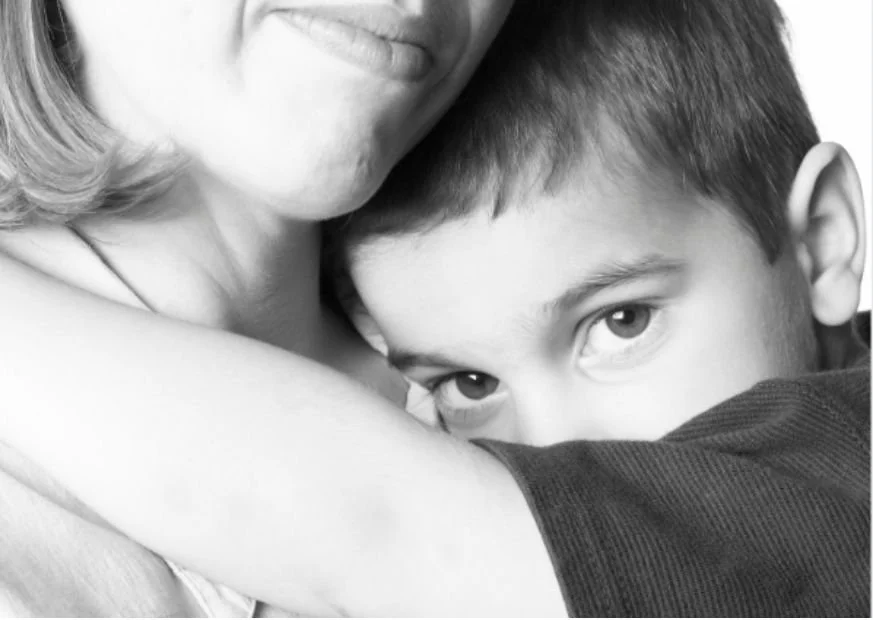PARENTING PROGRAMMES
Is Your Child Shy or Experiencing Selective Mutism?
Understanding and Managing Selective Mutism
Jump to: Managing Selective Mutism
For most parents, there is no greater joy than watching your child discover new places and connect with new people. However, for some families, that experience can be diminished by the fact that in some situations, their child seems completely unable to speak.
Selective mutism is a severe childhood anxiety disorder where children are unable to speak in certain social situations, such as with classmates at school or to relatives they do not see very often. It usually manifests during childhood and, if left unaddressed, can persist into adulthood.
Children with selective mutism are often thought to be ‘shy’. Their reluctance to engage in social interactions may be mistaken for defiance at times. In reality, the majority of children with selective mutism have overwhelming anxiety and a social phobia. Just as adults may have a fear of heights or spiders, selectively mute children have a fear of speaking.
The expectation to talk to certain people triggers a freeze response with feelings of panic, like a bad case of stage fright. They are hence literally unable to speak in certain situations. However, children with selective mutism have no trouble speaking in situations where they feel comfortable, secure and relaxed. For example, they can speak freely to certain people, such as close family members in their homes.
Causes of Selective Mutism
Many factors are thought to contribute to selective mutism. They include:
Ψ Child or adolescent’s temperament
Children with selective mutism often have severely inhibited temperaments. Studies show that individuals with inhibited temperaments are more prone to anxiety than those without shy temperaments.
Ψ Developmental difficulties, particularly in the area of language
Some children with selective mutism have subtle speech, or language abnormalities such as receptive or expressive language abnormalities and language delays. Others may have subtle learning disabilities including auditory processing disorder. The added stress of the speech or language disorder, learning disability, or processing disorder may cause the child to feel much more anxious and insecure or uncomfortable in situations where there is an expectation to speak.
Ψ Anxiety, particularly social anxiety
A majority of children with selective mutism have a genetic predisposition to anxiety. In other words, they have inherited a tendency to be anxious from one or more family members. Very often, these children show signs of severe anxiety, such as separation anxiety, frequent tantrums and crying, moodiness, inflexibility, sleep problems and extreme shyness from infancy onwards.
Signs of Selective Mutism
The main warning sign is the marked contrast in the child's ability to engage with different people, seen with a sudden stillness and frozen facial expression when they're expected to talk to someone who they’re not comfortable with.
They may avoid eye contact and appear:
Ψ Nervous, uneasy or socially awkward
Ψ Rude, disinterested or sulky
Ψ Clingy
Ψ Shy and withdrawn
Ψ Stiff, tense or poorly co-ordinated
Ψ Stubborn or aggressive, having temper tantrums when they get home from school, or getting angry when questioned by parents
Managing Selective Mutism
It is important to remember that while selective mutism is a constant struggle for these children, parents can help change how their children feel in these situations by helping them seek help early.
The various available methods to manage it include: Behavioural Therapy, Cognitive Behavioural Therapy, Play Therapy and medication.
Ψ Behavioural Therapy
This is commonly used to help overcome anxiety of speaking in social settings. It involves gradually exposing a child to increasingly difficult speaking tasks. Practice begins with baby steps and gets progressively harder – like climbing a ladder.
In this therapy, children should be asked to complete tasks with high success rates. This success should then be rewarded with praise and small prizes. In time, children learn that the anxiety they feel when asked to speak decreases without having to avoid the situation. Accordingly, they will feel more comfortable in being a part of situations and interacting in conversations.
Ψ Cognitive Behavioural Therapy (CBT)
This involves identifying anxious thoughts contributing to mute behaviour. Introducing cognitive strategies is most useful for children at age 7 and older, when they have developed the ability to become aware of their thoughts.
Techniques include recognising tell-tale symptoms of anxiety, identifying and challenging maladaptive beliefs and developing a coping plan to deal with distress. For example, many selectively mute children have anxious thoughts revolving around people making fun of their voice or what they wish to say.
Cognitive therapy teaches the child that those thoughts are the product of worry (and are not real threats) and to coach themselves by telling themselves positive thoughts instead.
Ψ Play Therapy
Play Therapy helps children process emotions, learn coping skills, and build self-confidence through play.
The psychologist facilitates the learning process through the child engaging in self-directed play, art or other means. This creates a therapeutic environment where talking is not initially required. For example, materials such as games and colouring books are used to allow the child to feel comfortable without initial communication.
Playing becomes the child’s way to communicate and make sense of his or her experiences. Each child’s therapeutic process varies according to their own pace. The therapy aims to progressively develop a child’s speaking skills from a sign system, verbal cues, one-word responses and eventually to full sentences.
Ψ Use of Medication
Depending on the severity of the condition, medications may be considered to help reduce the symptoms of selective mutism.
A medical doctor (psychiatrist) can prescribe medication to address the anxiety causing the child’s inability to speak in certain situations. Medications are most effective when combined with behavioural or other psychological strategies as mentioned above. This helps the child to maintain gains in communication over time. In particular, SSRIs (selective serotonin re-uptake inhibitors) have the most evidence for being useful in youth with anxiety conditions.
The Importance of an Early Diagnosis
It is important to have your child diagnosed when he or she is young. The rationale is because when a child is helped early for selective mutism, there will be a quicker response to the management plan, leading to a better overall prognosis. If a child remains mute for many years, his or her behaviour can become conditioned where the child literally becomes accustomed to being non-verbal.
In other words, selective mutism can become a difficult habit to break!
Furthermore, selective mutism can have negative academic, social and emotional consequences if left unaddressed throughout the child’s life. They may eventually develop poor self-esteem or suffer from social isolation. Thus, children with selective mutism will require the assistance of a qualified expert such as a registered psychologist with experience managing selective mutism.
What should you do if you suspect your child has selective mutism?
Parents should remove all pressure and expectations for the child to speak. Tell your child that you understand that he or she is scared and that you will help him or her through this difficult time. Additionally, praise the child’s efforts and acknowledge the difficulties.
Parents should also speak with a psychologist who has experience with selective mutism. The psychologist will conduct a screening for selective mutism if necessary. Screening typically includes parent (or caregiver) and teacher report measures as well as competency-based tools such as interviews and observations.


